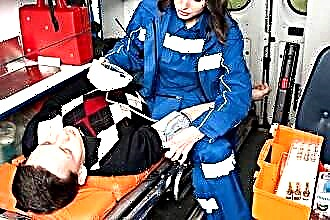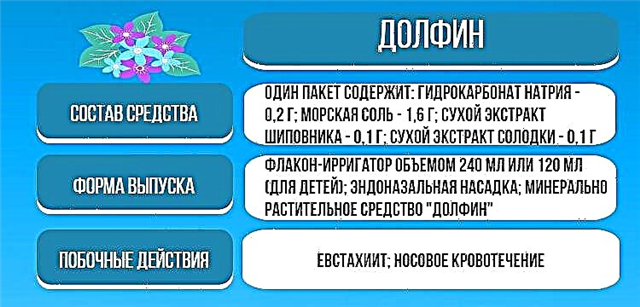A cough, provoked by a spasm in the throat, is one of the most unpleasant signs of the disease. No one is immune from the appearance of this symptom. The duration of seizures can also vary from person to person.
A spastic cough can overtake both an adult and a child during the season of exacerbation of allergies and during the period of rampant colds. With all the desire to stop the suffocating cough is not possible. The throat is like someone squeezing, so there are significant problems with breathing. If coughing cramps begin, action should be taken immediately. By the way, in this case, a person may well help himself on his own. If the cough spasm is not eliminated in time, it threatens with very serious complications - profuse vomiting, rupture of blood vessels or lungs, nervous breakdown and overexcitation. From this point of view, a spasmodic cough in a child is especially dangerous.
When arises
 There are quite a number of diseases, the symptom of which is a dry cough with cramps in the throat. If this warning sign appears in a child, whooping cough is very likely. An obsessive, debilitating cough is its most striking symptom. The attack can last up to several hours in a row and end with vomiting. If the child begins to cough and cannot stop in any way, you need to immediately help him and go to the doctor. Remember that self-medication in this case is extremely dangerous.
There are quite a number of diseases, the symptom of which is a dry cough with cramps in the throat. If this warning sign appears in a child, whooping cough is very likely. An obsessive, debilitating cough is its most striking symptom. The attack can last up to several hours in a row and end with vomiting. If the child begins to cough and cannot stop in any way, you need to immediately help him and go to the doctor. Remember that self-medication in this case is extremely dangerous.
If a person is not seriously ill, it can be assumed that such a cough is an allergic reaction. Usually, a debilitating cough of allergic origin occurs suddenly, and just as abruptly disappears. However, if the attack is delayed, it is imperative to take appropriate measures to alleviate it.
A harsh cough with cramping in the throat of a toddler may indicate that a foreign object has entered the airway. This situation is not at all uncommon. After all, small children are not able to control what and why they drag into their mouths.
The presence of a foreign body in the child's airways is determined by a slight swelling of the right or left lung and a significant weakening of breathing. At the same time, the baby is constantly coughing and cannot take a full breath.
When a spasmodic cough is taken by surprise, it is difficult to immediately understand what the cause is. The attack can end in just a minute, or it can take hours.
It should be remembered that no symptom comes out of nowhere. Everything has a reason. But in order to find it out, you need to consult a doctor, get tested and examined. Only then will the treatment be truly effective.
How does whooping cough develop?
When the cough is accompanied by spasms of the larynx, when it is not possible to take a full breath, whooping cough can be suspected. An accurate diagnosis will be made only by a doctor, who should be consulted immediately.
Consider how this symptom manifests itself and develops with this ailment.
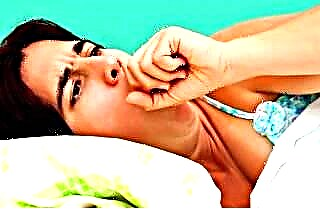 The first symptoms of whooping cough develop when the disease is in the catarrhal stage. Complicating the diagnosis is that they are identical to those of the common cold. A person develops chills, a runny nose, a cough with spasms in the throat, pain in the chest appears, and the voice becomes hoarse. Despite all efforts to treat the alleged cold, the cough gets worse every day. The body temperature rises to 38 degrees. In some cases, a higher one is also recorded.
The first symptoms of whooping cough develop when the disease is in the catarrhal stage. Complicating the diagnosis is that they are identical to those of the common cold. A person develops chills, a runny nose, a cough with spasms in the throat, pain in the chest appears, and the voice becomes hoarse. Despite all efforts to treat the alleged cold, the cough gets worse every day. The body temperature rises to 38 degrees. In some cases, a higher one is also recorded.- 2 weeks after the first signs of the disease appear, whooping cough attacks with spasms develop. They can be recognized by short coughing jerks, ending with a deep breath with a whistle. During one attack, there can be from 2 to 15 such specific cycles.
- The attack of spastic cough is completed by coughing up thick sputum and vomiting. In a day, whooping cough occurs up to 50 seizures per day. Their number directly depends on the severity of the patient's condition.
- After the acute stage has passed, a cough with spasms in the throat will annoy the person for a month. True, the intensity of the attacks will gradually decrease.
- Adults tolerate spasmodic coughing more easily than children. The transition from dry suffocating cough to productive cough will take about a month. The usual antitussive therapy used for colds is ineffective.
If a person has ever had whooping cough, they remain immune to the disease. Therefore, when a painful dry cough with spasms suddenly appears, its cause should be sought elsewhere.
For colds and bronchial asthma
A dry cough in the form of spasmodic attacks can also signal an acute inflammatory lesion of the pharynx, nasopharynx and larynx. During the first few days, he remains unproductive, after which sputum begins to cough up little by little. This is due to the fact that mucus flows down the pharynx (more precisely, along its back wall) and irritates the mucous membrane. If the inflammatory process is not stopped and eliminated in time, the patient's condition will worsen. There is a risk of developing complications in the form of:
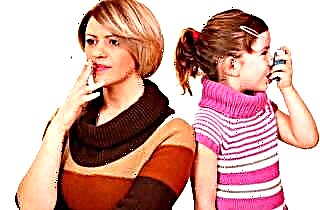 tracheitis;
tracheitis;- bronchitis;
- pneumonia.
In acute bronchitis, cough in the form of spasmodic attacks annoys both day and night. It is almost impossible to clear your throat qualitatively. In addition, a person suffers from a runny nose, headache and general weakness, the voice becomes hoarse, the body temperature rises, and the throat is unpleasantly sore.
Attacks of a strong, dry cough are especially plaguing a person in the first few days of illness. If the diagnosis is made on time and the correct treatment is started, after 3-4 days sputum will begin to cough up. With the help of the drugs prescribed by the doctor, the mucous membrane will soften, and it will become much easier to endure the cough. With adequate treatment, recovery usually occurs in 2 weeks.
Spasmodic coughing attacks can also indicate the development of a formidable disease - bronchial asthma. As a rule, they occur in the evenings and at night. Most often, any allergen provokes their occurrence. This cough is accompanied by choking, chest or abdominal pain. The duration of one attack is about an hour. It ends with expectoration of liquid or viscous sputum.
How to treat
It is quite difficult to find effective drugs that will cope with the disease in the shortest possible time. Often, the doctor makes an appointment based on the symptoms and medical history. If a cough with spasms appeared as a result of a disease of the digestive tract (and this happens), then a gastroenterologist will advise the necessary drugs. As a rule, it is a widespread antispasmodic "No-shpa" and an antihistamine "Tavegil".
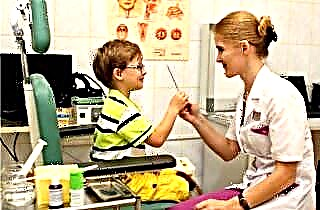 Special remedies to improve coughing are prescribed if the cause of spasms is chronic bronchitis. With their help, sputum is effectively liquefied and removed from the body.
Special remedies to improve coughing are prescribed if the cause of spasms is chronic bronchitis. With their help, sputum is effectively liquefied and removed from the body.- If cough spasms are due to a nervous disorder, they can only be eliminated with sedatives. The problem will disappear by itself when the person begins to calm down on their own.
- A spastic cough can be triggered by thyroid disease. You can get rid of it if you take preparations containing iodine.
- If the cause of cough spasms is whooping cough, then you will most likely have to be treated in an infectious diseases hospital.To combat this ailment, doctors usually prescribe Bronholitin, Tusuprex and Libeksin.
In general, to eliminate cough with spasms of the larynx, medications are prescribed that relax the bronchial muscles, reduce the thickness of sputum and envelop the irritated mucosa. As a rule, it is treated with syrups and tablets - "Clenbuterol", "Salbutamol", "Berodual", "Bromhexin" and "Lazolvan".
To relieve spasm, you can do eucalyptus and menthol inhalations, lubricate the chest with various ointments ("Doctor Mom"), or, in the old fashioned way, put mustard plasters.
How to relieve a spasm when coughing
Today there are many different recipes and methods for quickly and effectively relieving cough spasms. Here are a few of them as an example:
- Take valerian tincture and dissolve 20 drops in half a standard glass of clean water. Have a drink and lie down for a while. In just a few minutes, your condition will ease.
- Steam your feet in hot water, after dissolving dry mustard in it. After that, immediately lie down under a warm blanket. This elementary remedy effectively eliminates a spasmodic coughing fit.
- Chew on the leaf of the golden mustache. Thanks to this medicinal plant, the spasm will be relieved in a few minutes.
 Take a tablespoon of pine buds and pour a glass of boiled water over them. Let it brew for half an hour. Taking the drug is essential during an attack. It helps to quickly and efficiently eliminate the spasm.
Take a tablespoon of pine buds and pour a glass of boiled water over them. Let it brew for half an hour. Taking the drug is essential during an attack. It helps to quickly and efficiently eliminate the spasm.- Take a glass of hot milk and add some natural liquid honey, a lump of fresh butter and a pinch of baking soda to it. Such a healing drink perfectly removes attacks that annoy a person at night.
- You can lightly pat the upper chest and back of the sick person. This will help free the bronchi from the phlegm that has accumulated there. After that, you should give him a drink of alkaline mineral water (only in small sips). This method is great at combating spastic cough.
- Pour sugar (a full tablespoon) into a saucepan and put it on fire. Wait for the sugar to brown and add a quarter of a standard glass of clean water to it. Then - 3-4 drops of aloe juice. It is a very powerful remedy that can eliminate even the most severe spasms.
- Close the bathroom door and turn on the hot water tap fully (alternatively, put a large pot of boiling water). When the bathroom fills with steam, the humidity level rises. The humidified air will help relieve cramps. This method can be used if help needs to be provided quickly and there are no other means at hand.
Let's summarize
 When a person experiences pain or choking when coughing, the elimination of these symptoms should be addressed immediately. Neglect can lead to serious complications, which will have to be treated in a hospital setting.
When a person experiences pain or choking when coughing, the elimination of these symptoms should be addressed immediately. Neglect can lead to serious complications, which will have to be treated in a hospital setting.
On the one hand, it seems that everything is extremely simple: you can go to the nearest pharmacy and buy something advertised for coughs. However, before starting treatment, you need to clearly know the reason why spasmodic coughing attacks began. Only in this case will it be effective.
The child must be shown to the doctor if all other symptoms of the disease have already passed, but the cough remains, and also if the cough began to appear suddenly and with spasms of the larynx. It is imperative to consult a pediatrician if, due to a cough, the baby cannot sleep, during an attack it turns pale or turns blue. With difficulty breathing and a rise in temperature, you can not hesitate for a minute.
 The first symptoms of whooping cough develop when the disease is in the catarrhal stage. Complicating the diagnosis is that they are identical to those of the common cold. A person develops chills, a runny nose, a cough with spasms in the throat, pain in the chest appears, and the voice becomes hoarse. Despite all efforts to treat the alleged cold, the cough gets worse every day. The body temperature rises to 38 degrees. In some cases, a higher one is also recorded.
The first symptoms of whooping cough develop when the disease is in the catarrhal stage. Complicating the diagnosis is that they are identical to those of the common cold. A person develops chills, a runny nose, a cough with spasms in the throat, pain in the chest appears, and the voice becomes hoarse. Despite all efforts to treat the alleged cold, the cough gets worse every day. The body temperature rises to 38 degrees. In some cases, a higher one is also recorded. tracheitis;
tracheitis; Special remedies to improve coughing are prescribed if the cause of spasms is chronic bronchitis. With their help, sputum is effectively liquefied and removed from the body.
Special remedies to improve coughing are prescribed if the cause of spasms is chronic bronchitis. With their help, sputum is effectively liquefied and removed from the body. Take a tablespoon of pine buds and pour a glass of boiled water over them. Let it brew for half an hour. Taking the drug is essential during an attack. It helps to quickly and efficiently eliminate the spasm.
Take a tablespoon of pine buds and pour a glass of boiled water over them. Let it brew for half an hour. Taking the drug is essential during an attack. It helps to quickly and efficiently eliminate the spasm.